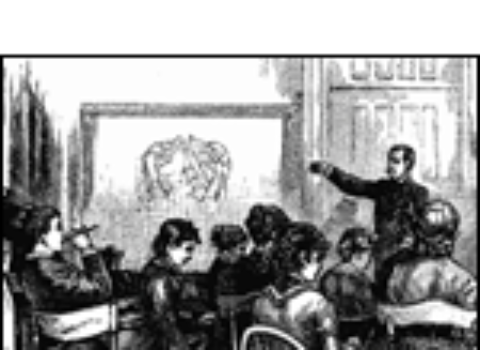From The Newlyweds, which will be published next month by Atria Books.
For most of my mother’s life, she has lived in the house she was born in. It is a roomy apartment on the second floor of a building with curving, dark stairs in an old part of Mumbai. Its big bedroom windows open into the canopies of trees. There is a powder-blue wall populated with old photographs of the city, and the drawers sometimes still reveal the belongings of people who had spent part of their lives in this house, then moved on to somewhere else. They include my great-grandparents, grandparents, uncles, aunts, cousins, my sister, and me.
When my mother was eighteen, she fell in love with a man and married him against her family’s wishes. After her eleven-year marriage crumbled, she returned to the house with two daughters. Even though she has lived in the same place for forty-eight years since, she carries an air of displacement everywhere she goes. She is always in a hurry. In a hurry to get somewhere. In a hurry to return. In a hurry to leave again. But to where?
Two in every three Indians is under the age of thirty-five. No other country has more young people. Yet we are torn about whether it is acceptable to be young and do the things that young people do. A 2017 survey revealed that 13 percent of our young people consider caste to be the defining aspect of their identity, while 14 percent consider religion to be the defining aspect. Around one third of us believe intercaste marriages to be “completely wrong.” Close to half of us are completely opposed to interreligious marriage. Just one in seven of us approves of dating before marriage. Roughly four in five of us had an arranged marriage, and only 6 percent of us chose our own partners. Marriage has a special place in Indian society. In many ways, it is the only intended outcome of growing up. It is an arrangement between two families of the same warp and weft in the tapestry of religion, caste, class, clan, region, and language. When young people choose their own partners, we threaten order with chaos.
There is a great power in longing for love, but once we attain that love at the cost of moral injury, that space can become filled with longing for acceptance. The process of reconciliation with our choices can be both beautiful and terrible. I’ve often thought about why Indian society does not implode from the pressure of so many young people—especially young women—pushing against what we want and what we are expected to want. After they risk everything for the sake of love, they suddenly cannot recognize themselves. Each of them is tormented by one central question: Was it worth it?
Late one evening at my mother’s home, I asked her whether her decision to marry the man she fell in love with all those years earlier had been worth it. “I don’t know,” she answered.
One monsoon afternoon in 1973, when my mother was seventeen, she stole away from college to watch a matinee of the 1960 movie Mughal-e-Azam with my father. The story is set during the reign of the sixteenth-century Mughal emperor Akbar, and is based on the legend of Salim and Anarkali, the Mughal crown prince and a dancing girl. Prince Salim and Anarkali’s love, forbidden by taboos of nobility and class, comes to a tragic end when Akbar orders Anarkali to be buried alive.
My mother, the daughter of a wealthy merchant, was in love with my father, a struggling engineer from the chawls. They wanted to marry with their families’ permission, but they knew it was impossible, so they allowed the fantasy of the dancing girl and the crown prince to fall over them like a warm blanket and lull them to sleep.
Six decades after the film was released, Mughal-e-Azam is still the grandest national model of doomed romance. We draw moral power from it because it assigns a greater meaning to our choices. It teaches us that life is too small to contain the enormity of love. It reminds us that whenever great love visits, it leaves behind a world thrown apart by it.
When I was eleven, I became deeply disturbed that I was losing resemblance to my mother. She was short; I was already as tall as her. Her hair was straight and silken; mine was unruly. Her hands were round; mine were square. I had never met my father, who left us after I was born and died shortly after, but I was told that I inherited his appearance. For most of my childhood, I prayed with utter humility that I would start to look like my mother. It would mean that I was more like her than him, mainly so that I would not feel like a stranger to myself.
When my mother ran errands after work, she usually left my sister and me waiting in her blue Fiat to ward off tow trucks. The evening of that monsoon, she took us to a house where an old man sat upstairs in an undershirt and sarong on a tattered sofa. He introduced himself as our grandfather and handed me a photo of a man wearing caramel-brown bell-bottoms and a patterned silk shirt. My father stood with one hand on his waist and one leg on a footstool, the way colonial hunters posed with wild animals. He had short curly hair, a pencil-thin mustache, and my nose.
On the way home, when my mother popped her head out at the traffic light to adjust the broken wiper and clear the windshield with a hand towel, I thought about asking her why she had decided to take us upstairs. When we reached home, I no longer wanted to know. I slipped the photograph of my father in an envelope and forgot where I had hid it.




